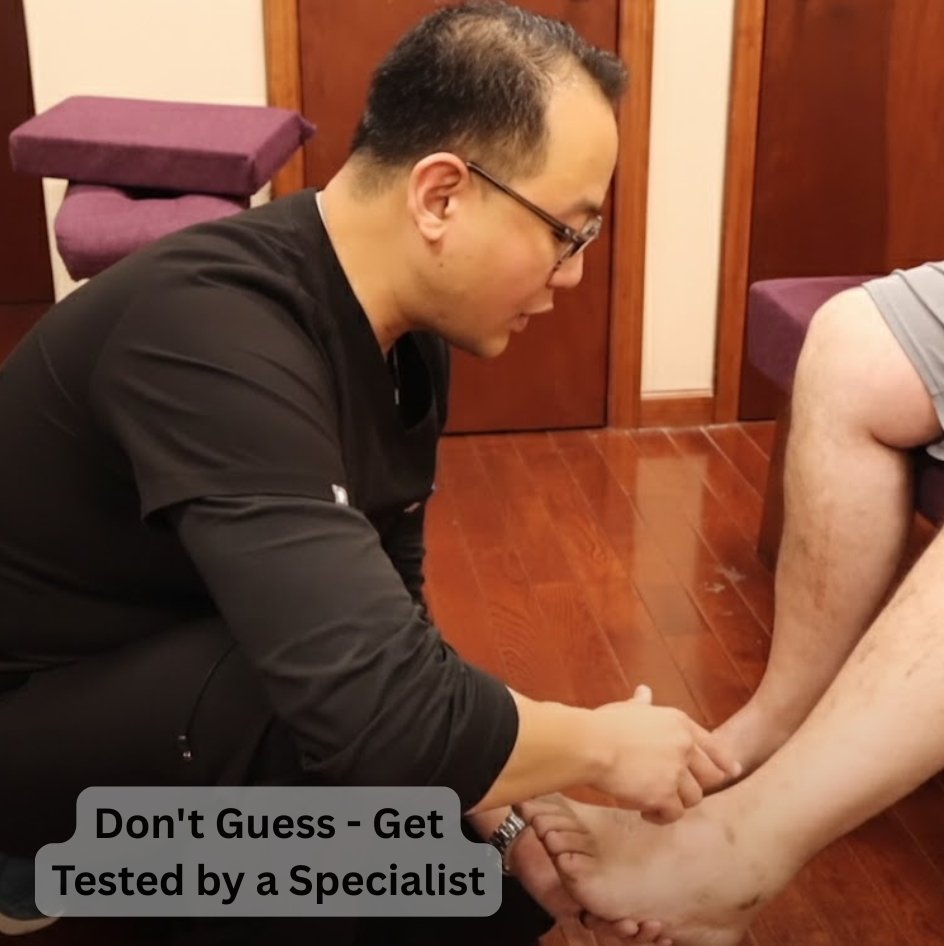Why Visiting a Foot Doctor Is Better Than Relying on Over-the-Counter Fungal Treatments
Many people notice a discolored toenail or itchy foot and reach straight for over-the-counter creams or sprays.
It seems easy, right? A quick fix from the pharmacy shelf.
But according to Dr. Lee, a foot specialist with over 10 years of experience, fungal infections are rarely that simple — and treating them correctly requires more than just a tube of cream.
I always send my patients’ specimens to the lab,” Dr. Lee explains.
“That way, I can find out exactly what type of fungus they have and which medication works best for it.
Let’s explore why seeing a podiatrist is more effective than self-treating — and how expert care can save time, money, and frustration.
Fungal Infections Aren’t All the Same
Fungal nail and foot infections may look similar on the surface — yellow nails, peeling skin, or itching between the toes — but the type of fungus causing them can vary.
That’s the first problem with over-the-counter (OTC) treatments:
They’re designed to target common fungal strains, not your specific infection.
Dr. Lee says:
“When I treat a patient, I test the infection first. Once I know the exact organism, I can prescribe a treatment that’s proven to work against it.”
Without proper testing, you might treat the wrong cause for months — and see little to no improvement.
Over-the-Counter Medications Are Often Too Weak
Most drugstore antifungal products are safe but mild. They’re made for superficial infections, not persistent or deep fungal problems.
While they may ease symptoms temporarily, they rarely eliminate the fungus entirely. This can lead to cycles of relapse — where the infection returns stronger than before.
Dr. Lee explains:
Typical over-the-counter medications you buy from a pharmacy are not very strong. You can use them over and over, but the chance of real results is low.
How a Foot Doctor Treats Fungal Infections Differently
Seeing a podiatrist means getting a precise, targeted treatment plan, not just a general solution. Here’s how professional care makes the difference:
- Laboratory Testing: Identifies the exact fungus type (yeast, mold, or dermatophyte).
- Customized Medication: Ensures the prescribed antifungal is effective for your specific infection.
- Advanced Treatments: May include laser therapy, topical compounds, or oral antifungals unavailable over-the-counter.
- Comprehensive Care: A podiatrist checks for hidden causes — poor circulation, diabetes, or shoe fit — that may slow recovery.
This holistic approach treats both the infection and its source, reducing the chance it comes back.
Prevention and Home Care Tips
Even after treatment, fungus can return if the environment stays damp or contaminated. Dr. Lee recommends a few daily habits to help prevent reinfection:
- Keep feet dry: Change socks daily and dry thoroughly between toes.
- Disinfect shoes: Use antifungal spray or UV shoe sanitizers.
- Avoid walking barefoot in public showers or locker rooms.
- Trim nails carefully — never share clippers.
- Choose breathable shoes and rotate pairs to allow airflow.
These small habits make a big difference in maintaining foot health long-term.
Pro Tip: Don’t Guess — Get Tested
If your nail thickens, changes color, or cracks easily — don’t assume it’s just a cosmetic problem.
It could be fungal, bacterial, or even related to another underlying condition.
A podiatrist can quickly identify the cause and prescribe the right treatment from the start, saving you months of trial and error.
Knowing the exact bug means knowing exactly how to fight it,” says Dr. Lee.
Key Takeaway
Over-the-counter antifungal creams can help mild cases, but they’re no match for professional diagnosis and targeted care.
A podiatrist doesn’t just treat symptoms — they find the root cause, customize the medication, and guide you toward lasting recovery.
Healthy feet begin with expert care.
If you’ve been battling nail or foot fungus for weeks without results, it’s time to see a specialist.
“You can also watch this video to gain a clearer and more detailed understanding of the topic.”





